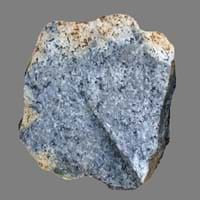Definition
Peridotite is a dense, coarse-grained plutonic is the main constituent of the earth's mantle
Syenite is a coarse-grained igneous rock which is composed mainly of alkali feldspar and various ferromagnesian minerals
Origin
Pike County, U.S
Unknown
Discoverer
Unknown
Unknown
Etymology
From French, from peridot + -ite
From French syénite, from Latin Syenites (lapis ) (stone) of Syene
Class
Igneous Rocks
Igneous Rocks
Sub-Class
Durable Rock, Medium Hardness Rock
Durable Rock, Medium Hardness Rock
Other Categories
Coarse Grained Rock, Opaque Rock
Coarse Grained Rock, Fine Grained Rock, Medium Grained Rock, Opaque Rock
Texture
Phaneritic
Earthy
Color
Dark Greenish - Grey
Brown, Buff, Cream, Green, Grey, Pink, White
Durability
Durable
Durable
Scratch Resistant
Yes
Yes
Appearance
Rough and Shiny
Banded and Foilated
Interior Uses
Decorative Aggregates, Interior Decoration
Flooring, Homes, Hotels, Interior Decoration
Exterior Uses
As Building Stone, As Facing Stone, Garden Decoration
As Building Stone, As Facing Stone, Paving Stone, Garden Decoration, Office Buildings
Other Architectural Uses
Curbing
Curbing
Construction Industry
As Dimension Stone, Cobblestones
As Dimension Stone, Cement Manufacture, Construction Aggregate, for Road Aggregate, Landscaping, Making natural cement, Manufacture of Magnesium and Dolomite Refractories
Medical Industry
Not Yet Used
Not Yet Used
Antiquity Uses
Monuments, Sculpture, Small Figurines
Artifacts, Monuments, Sculpture, Small Figurines
Commercial Uses
Creating Artwork, Gemstone, Jewelry, Source of Chromite, Platinum, Nickel and Garnet, Source of Diamonds
Cemetery Markers, Creating Artwork
Types
Dunite, Wehrlite, Harzburgite, Lherzolite and Pyrolite
Shonkinite
Features
Constitutes upper part of the Earth's mantle, Generally rough to touch, Host rock for Diamond, Is one of the oldest rock
Available in Lots of Colors and Patterns, Is one of the oldest rock, Matrix variable
Archaeological Significance
Famous Monuments
Data Not Available
Data Not Available
Famous Sculptures
Data Not Available
Data Not Available
Formation
Peridotites can be formed in two ways: as mantle rocks formed during the accretion and differentiation of the Earth or as cumulate rocks formed by precipitation of olivine and pyroxenes from basaltic magmas.
Syenites are formed due to alkaline igneous activities and are generally formed in thick continental crustal areas or in Cordilleran subduction zones.
Mineral Content
Amphibole, Chromite, Garnet, Magnesium, Olivine, Phlogopite, Plagioclase, Pyroxene
Amphibole, Biotite, Feldspar, Hornblade, Micas, Muscovite or Illite, Plagioclase, Pyroxene, Quartz
Compound Content
Ca, Fe, Mg, Potassium, Silicon Dioxide, Sodium, Titanium Dioxide
Aluminium Oxide, CaO, Iron(III) Oxide, FeO, Potassium Oxide, MgO, MnO, Sodium Oxide, Phosphorus Pentoxide, Silicon Dioxide, Titanium Dioxide
Types of Metamorphism
Burial Metamorphism, Cataclastic Metamorphism, Contact Metamorphism, Hydrothermal Metamorphism, Impact Metamorphism, Regional Metamorphism
Burial Metamorphism, Cataclastic Metamorphism, Contact Metamorphism, Hydrothermal Metamorphism, Impact Metamorphism, Regional Metamorphism
Types of Weathering
Biological Weathering, Chemical Weathering, Mechanical Weathering
Biological Weathering, Chemical Weathering, Mechanical Weathering
Types of Erosion
Chemical Erosion
Chemical Erosion, Coastal Erosion, Glacier Erosion, Sea Erosion, Water Erosion, Wind Erosion
Grain Size
Coarse Grained
Medium to Fine Coarse Grained
Fracture
Irregular
Not Available
Porosity
Less Porous
Less Porous
Luster
Shiny
Subvitreous to Dull
Cleavage
Imperfect
Perfect
Toughness
2.1
Not Available
Specific Gravity
3-3.01
2.6-2.7
Transparency
Translucent to Opaque
Opaque
Density
3.1-3.4 g/cm3
2.6-2.8 g/cm3
Resistance
Heat Resistant, Pressure Resistant, Wear Resistant
Heat Resistant, Impact Resistant, Wear Resistant
Deposits in Eastern Continents
Asia
China, India, Indonesia, Kazakhstan, Russia, South Korea, Thailand, Turkey
China, India, Iran, Saudi Arabia, Sri Lanka, Taiwan, Thailand, Turkey, Vietnam
Africa
Morocco, South Africa
Angola, Egypt, Madagascar, Namibia, Nigeria, South Africa
Europe
Finland, France, Georgia, Germany, Great Britain, Italy, Kazakhstan, Netherlands, Norway, Spain, Switzerland, Venezuela
Bulgaria, England, Germany, Norway, Romania, Switzerland
Others
Not Yet Found
Not Yet Found
Deposits in Western Continents
North America
Canada, USA
USA
South America
Brazil
Brazil, Chile
Deposits in Oceania Continent
Australia
New Zealand, Western Australia
New Zealand, Queensland, South Australia, Western Australia










